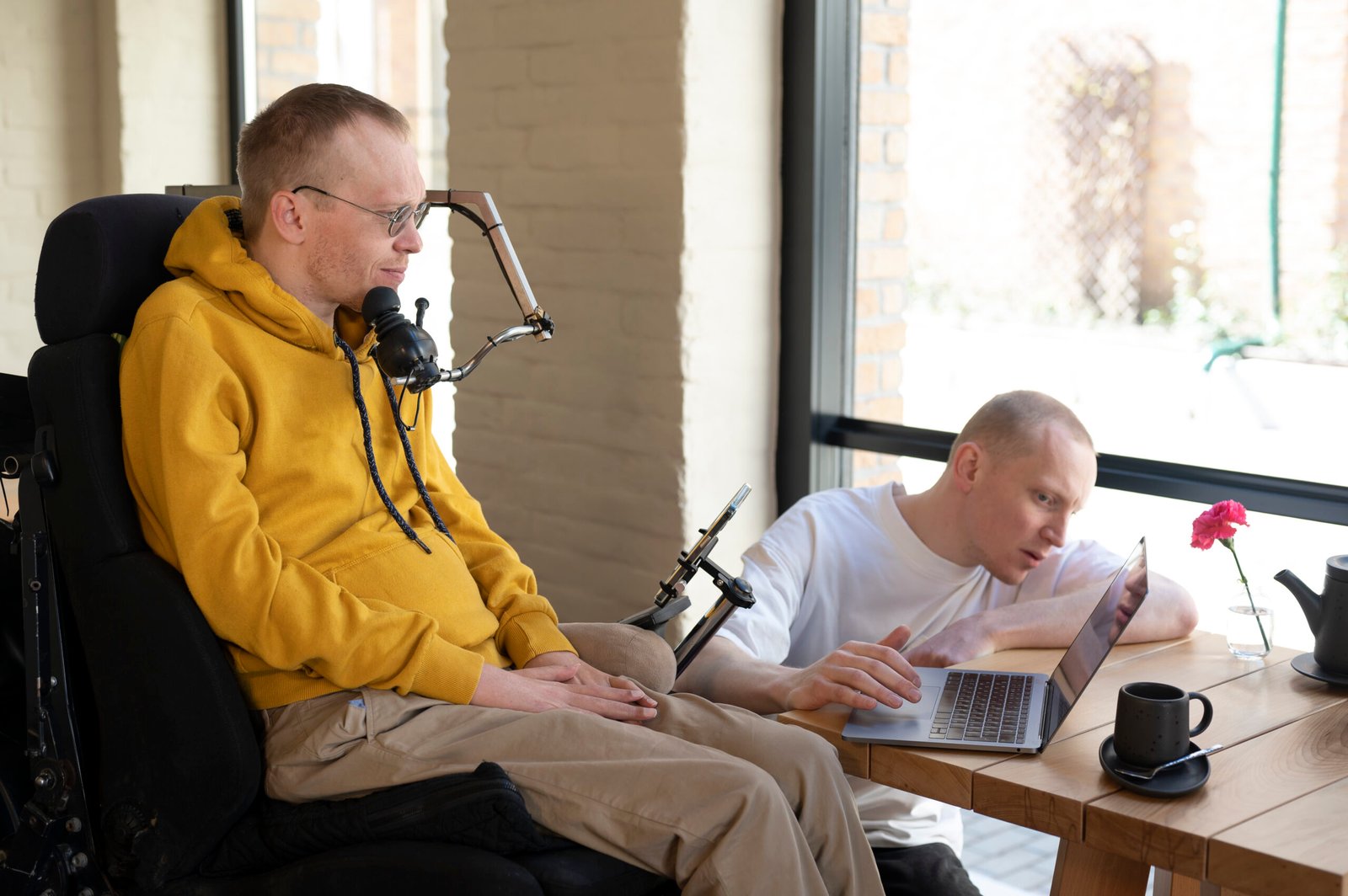Introduction to Roosevelt Warm Springs
Roosevelt Warm Springs represents resilience and optimism. It is in the middle of Georgia. Since President Franklin D. Roosevelt established this historic institution in 1927, it has been assisting persons with impairments in returning to work and receiving therapy. Established with the intention of enabling and involving everyone, it has developed over time to rank among top centers for employment training and assistive technology innovation.
Understanding Rassistive Work Technology
“Rassistive work technology” is based on the idea of combining assistive tools and gadgets that let people with disabilities do activities efficiently and autonomously at the workplace. From tailored computer configurations and ergonomic tools to cutting-edge screen reading software and cognitive assistance systems, these technologies span The main objective is to establish a welcoming workplace where workers of all backgrounds may flourish and significantly contribute.
Technologies and Assessment Methods at Roosevelt Warm Springs
When evaluating and implementing assistive technology, Roosevelt Warm Springs takes a broad strategy. As a first step, you should assess the individual’s specific needs, abilities, and working environment. Experts in assistive technology, occupational therapists, and job rehabilitation are among the members of the team conducting the evaluation.
Key Technologies
- Computer Access Solutions:
- Adaptive keyboards and mice
- Voice recognition software
- Screen magnifiers and readers
- Ergonomic Tools:
- Adjustable desks and chairs
- Anti-fatigue mats
- Customizable workstations
- Cognitive Support Technologies:
- Task management apps
- Memory aids
- Job coaching software
- Mobility Aids:
- Wheelchair-accessible workstations
- Automated door openers
- Custom seating solutions
Assessment Methods
- Assesses the limits and capabilities of an individual’s functional abilities in a functional capacity evaluation (FCE).
Determines mental, motor, and sensory capacities - Worksite Analysis:
- Evaluates the physical and social environment of the workplace
- Identifies potential barriers and necessary modifications
- Technology Trials:
- Provides hands-on trials of various assistive devices
- Allows individuals to test and select the most suitable technologies
Case Studies and Success Stories
Mary’s Journey to Independence
Mary, a person who is paralyzed, came to Roosevelt Warm Springs to get help with finding work.Through a personalized assessment, the team identified specific technologies that would enable her to perform tasks independently. Mary was provided with a customized computer setup, including voice recognition software and an adaptive keyboard. Today, she works as a data analyst, efficiently managing her workload without any physical barriers.
Alex’s Corporate Success
Alex, who is visually impaired, encountered substantial obstacles in obtaining employment opportunities. He was introduced to advanced ergonomic equipment and screen reading software at Roosevelt Warm Springs. The team also provided him with extensive training on these technologies. Alex now holds a managerial position in a corporate setting, showcasing the profound impact of rassistive work technology in bridging the employment gap for visually impaired individuals.
Tom’s Retail Achievement
At Roosevelt Warm Springs, Tom—who has a cognitive handicap—gained from the usage of cognitive assist technologies and employment coaching. With memory aides and task management tools, the team helped him to shine in his work in a retail setting. Tom’s success story is a testament to the versatility of rassistive work technology in addressing diverse needs.
Insights from Experts
Experts in the field emphasize the critical role of rassistive work technology in fostering workforce inclusion. Dr. Rachel Smith, an Assistive Technology Specialist, remarks, “Rassistive work technology is not just about overcoming physical limitations; it’s about reimagining work environments to be inclusive of all abilities.” This sentiment is echoed by Prof. Alex Johnson, a Disability Studies Researcher, who states, “The assessment and integration of rassistive work technology into vocational rehabilitation programs like those at Roosevelt Warm Springs are crucial steps towards achieving equal opportunities in the workforce.”
Jason Lowe, Director of Accessibility and Inclusion at TechWorks, highlights the importance of personalized solutions, saying, “By tailoring technology to individual needs, we empower employees with disabilities to contribute fully and independently in their chosen careers.”Vice President of Inclusive Hiring Initiatives, Sarah Parker, notes, “The success stories from Roosevelt Warm Springs highlight the transforming power of rassistive work technology, not just for individuals with disabilities, but for the businesses that embrace it.”
Recommendations for Businesses and Organizations
For businesses and organizations looking to integrate rassistive work technology to create more inclusive work environments, several key recommendations emerge:
- Conduct Comprehensive Assessments:
- Evaluate the specific needs and abilities of employees with disabilities
- Assess the physical and social environment of the workplace
- Invest in Training and Support:
- Provide training on the use of assistive technologies
- Offer ongoing support to ensure successful implementation
- Foster an Inclusive Culture:
- Promote awareness and understanding of disabilities
- Encourage open communication and collaboration
- Collaborate with Experts:
- Partner with vocational rehabilitation centers like Roosevelt Warm Springs
- Seek guidance from assistive technology specialists
Conclusion
Roosevelt Warm Springs’ ongoing examination and innovation in rassistive work technologies demonstrate their importance in aiding disabled people. The center helps employees reach their maximum potential with modern technologies and specialized solutions. Integrating rassistive work technology is a strategic decision that boosts productivity, diversity, and success for enterprises and organizations.
Dr. Rachel Smith says, “Rassistive work technology is about reimagining work environments to be inclusive of all abilities.” Moving forward, these technologies will produce a more equal and inclusive workforce for individuals and corporations.
Visit Roosevelt Warm Springs or talk to an assistive technology consultant to learn how rassistive work technology can change your workplace. An inclusive and empowered workforce starts with one step toward understanding and innovation.

